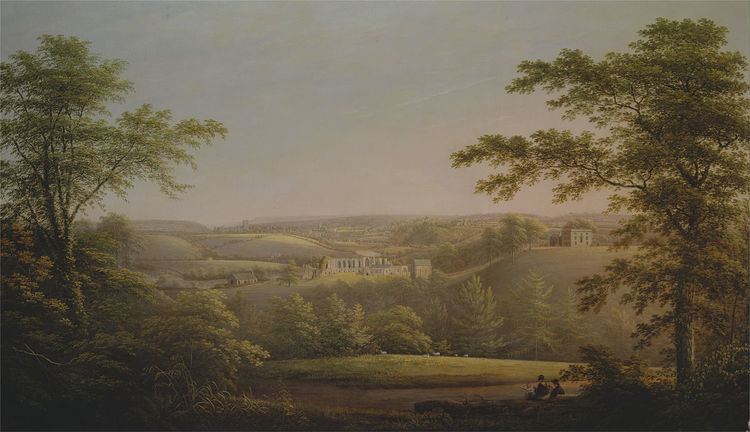 | ||
"The Lass of Richmond Hill", also known as "The Sweet Lass of Richmond Hill", is a song written by Leonard McNally with music composed by James Hook, and was first publicly performed in 1789. It was said to be a favourite of George III and, at one time, was thought to have been written by his son, George IV. It is a love ballad which popularized the poetic phrase "a rose without a thorn" as a romantic metaphor. Associated with the English town of Richmond in North Yorkshire, it is now often mistakenly considered to be a traditional or folk song, and has even been assigned the number 1246 on the Roud Folk Song Index. The music is also used as a military march by the British army.
Contents
Lyric
The words were written by Leonard McNally (1752 – 1820), who was a Dublin barrister, playwright, a leader of the United Irishmen (a clandestine republican Irish revolutionary society), but also a double agent for the British Government. McNally would betray his United Irishmen colleagues to the authorities and then, as defence counsel at their trial, secretly collaborate with the prosecution to secure a conviction. He wrote a number of songs and operettas, including for Covent Garden.
The "lass" referred to is Frances I’Anson, who Leonard McNally married in 1787. Her family owned a property in Richmond, Yorkshire called "Hill House", hence she was the "lass of Richmond Hill". (Lass is a Scottish or Northern English dialect word for "girl" or "young woman", derived from Old Norse.) Frances's father disapproved of McNally and the couple had to elope in order to marry. She died in childbirth five years after getting married; she was 29.
McNally's authorship was periodically disputed and other origins for the song were claimed over the years. These claims included that it was written by a Rosa Smith, who may have been a poet from Richmond, Surrey near London, and that it was about herself; that it was the work of another song-writer called Upton; and that the Prince of Wales (who later became the Prince Regent and then George IV) was the author. It was also thought that the Prince of Wales's mistress, Maria Fitzherbert ("Mrs Fitzherbert") was the subject of the song. All of these claims were unfounded.
The song is a ballad of praise of and expression of love for the "lass". It contains two verses with eight lines each and a chorus of four lines repeated after each verse. The first verse begins with the notable lines:
The chorus is:
According to the musicologist and conductor Peter Holman, "a way of celebrating national identity was to place a love-story in a picturesque British rural setting. The most famous song of this type is James Hook’s The Lass of Richmond Hill" The song was seen as so quintessentially English that authorship by an Irishman, that is, by McNally, was, as mentioned earlier, periodically challenged.
Music
The music was composed by James Hook (1746 – 1827), a composer and organist at Vauxhall Gardens from 1774 to 1820. Hook composed over 2,000 songs, the best known of which was "The Lass of Richmond Hill".
The music epitomises Hook’s charming but sanitised folk-song style using a Scottish pastoral idiom, and is often mistakenly believed to be a genuine traditional folk song, and has been assigned the number 1246 on the Roud Folk Song Index. Indeed, it has become a Scottish country dance.
